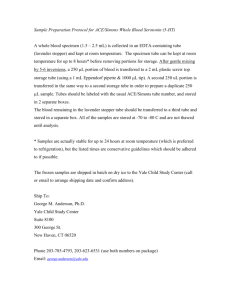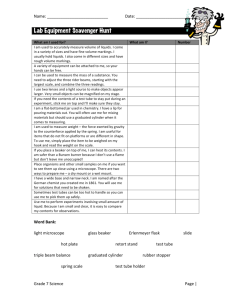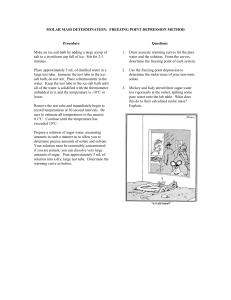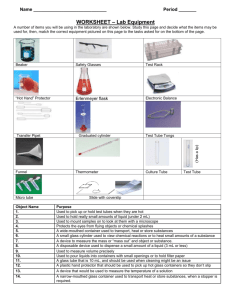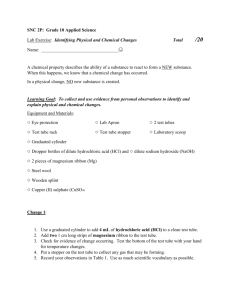Determining the Temperature of Absolute Zero Name
advertisement
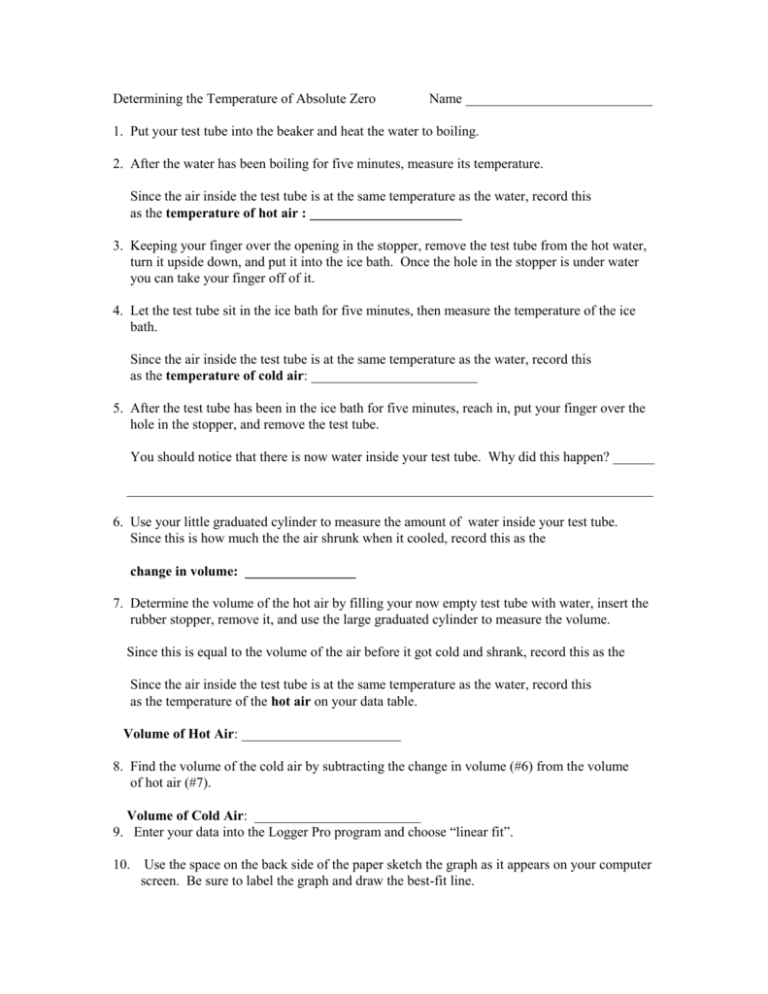
Determining the Temperature of Absolute Zero Name ___________________________ 1. Put your test tube into the beaker and heat the water to boiling. 2. After the water has been boiling for five minutes, measure its temperature. Since the air inside the test tube is at the same temperature as the water, record this as the temperature of hot air : ______________________ 3. Keeping your finger over the opening in the stopper, remove the test tube from the hot water, turn it upside down, and put it into the ice bath. Once the hole in the stopper is under water you can take your finger off of it. 4. Let the test tube sit in the ice bath for five minutes, then measure the temperature of the ice bath. Since the air inside the test tube is at the same temperature as the water, record this as the temperature of cold air: ________________________ 5. After the test tube has been in the ice bath for five minutes, reach in, put your finger over the hole in the stopper, and remove the test tube. You should notice that there is now water inside your test tube. Why did this happen? ______ ____________________________________________________________________________ 6. Use your little graduated cylinder to measure the amount of water inside your test tube. Since this is how much the the air shrunk when it cooled, record this as the change in volume: ________________ 7. Determine the volume of the hot air by filling your now empty test tube with water, insert the rubber stopper, remove it, and use the large graduated cylinder to measure the volume. Since this is equal to the volume of the air before it got cold and shrank, record this as the Since the air inside the test tube is at the same temperature as the water, record this as the temperature of the hot air on your data table. Volume of Hot Air: _______________________ 8. Find the volume of the cold air by subtracting the change in volume (#6) from the volume of hot air (#7). Volume of Cold Air: ________________________ 9. Enter your data into the Logger Pro program and choose “linear fit”. 10. Use the space on the back side of the paper sketch the graph as it appears on your computer screen. Be sure to label the graph and draw the best-fit line. 11. In the space below, write the equation for the linear fit. Be sure to substitute the appropriate values for slope and y-intercept. 12. Use the equation above to solve for the temperature (x) at which the air sample would have a volume (y) of zero ml. 13. According to Kelvin, the value obtained above would be the temperature of Absolute Zero, because any further cooling would produce a negative volume. The accepted value for Absolute Zero is 273.2 oC, how many degrees off were you? 14. Kelvin had no idea about atoms or their jiggling, but we do. What does Absolute Zero mean in terms of atomic motion? 15. Why is the Kelvin scale the better than either the Celsius or Fahrenheit scales? 16. If you had not been careful, and some of the water had leaked out of your container before found the change in volume, would your predicted valued for the temperature of absolute zero have been too hot or too cold?_____________________________ 17. Look at your graph. How cold would it have to be (in oC) in order for your air sample to be reduced to half its original volume?


